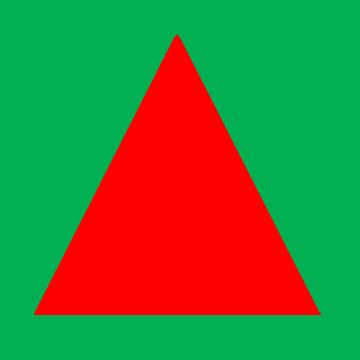We can take the candle flame meditation a bit deeper in terms of experience.
Notice is that after studying the flame for several minutes, intently, and with minimal blinking, it will appear either in the mind’s eye or vividly against a white wall [look away from the candle in this last instant] in reversed colors. A yellow candle flame will appear blue-ish or purple-ish. You can test this with various other objects, as was done both in the Indian Tattwa meditations, and in some Western practices as well. If you focus attention, as an example, on a red triangle, the afterimage on a white wall or in the mind, will be green. You do have to stare intently without much eye movement for a minimum of 30 to 60 seconds.
The Golden Dawn and other groups made intense meditation diagrams using these complementary colors together. They referred to them as “flashing colors.” You can experience the intensity, for example, by drawing or printing a bright red triangle upon a bright deep green background. In using this object for visual meditative practice, the red triangle will jump out at you during the eyes open contemplation due to the maximal contrast between foreground and background. You can create any object at this intensity by using the exact complementary color as a background to the color of the object. This effect can be so jarring than many artists painting in a more subtle style will avoid the exact complementary color as being too bold.

